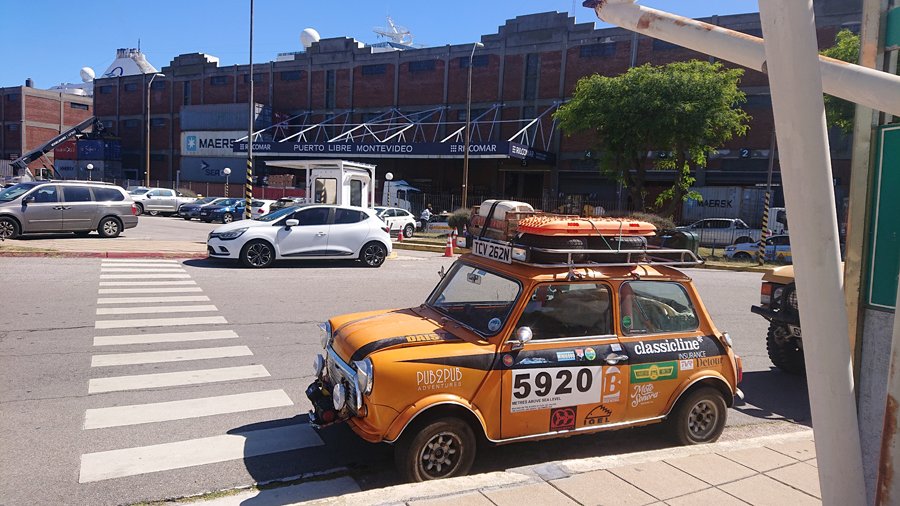The Long Road Home: Mini 6000 Expedition Leg 8
The Mini 6000 Expedition ends with a lengthy drive back to the Atlantic coast.
The town of Bariloche, pressed up against the deep blue waters of Lago Nahuel Ruapi, was the perfect place in which to spend a day off. With a population of over 100,000 the hustle and bustle felt a world away from the open landscapes of the previous few days on the road, but this wasn’t necessarily a bad thing, as variety adds spice to any journey. And the clues to our greater surroundings were still there, calling us every time we gazed out across the open lake, to the snow-crowned mountains beyond.
To many of its visitors, Bariloche provides a gateway to the south; a place in which to stock up and prepare, before heading towards Patagonia’s most famous sights. However for us, its symbolism was different. It was our south, being the southernmost corner of our vaguely triangular trip around South America. Instead of heading deeper into Patagonia, we’d be leaving town in a northeasterly direction, towards Buenos Aires, then continuing to Montevideo, from where we’d be shipping our cars back to Europe.
After several days of relaxing, enjoying the restaurants and sights of Patagonia’s biggest city, we were all ready to return to the road. Montevideo was 1,200 miles away, with much of this distance being covered amid the endless flat grasslands of central Argentina. We weren’t expecting the most exciting of drives, but as Bariloche fell behind us, we were pleasantly surprised.
The road flowed into a rugged valley, formed by the Rio Limay, and hills of sand and crag rose up to either side of us. In the bottom of the valley, the vivid greens of life crowded in next to the flowing waters. Once again, the surface beneath our wheels was good, and for hours it swept along with the river, finding its own path of least resistance along the valley, before climbing out into the empty plains of northern Patagonia to take a more direct route to the horizon. It was Argentina’s version of the American west, similarly open and unbounded, but with its own timeless style which rendered it unique, almost primeval.
We then came upon a place where dinosaurs roamed. Their footprints were visible down by the lake, and their long shadow hung heavy over the town. On the hillsides above, their descendents could be spotted, rendered in fibreglass and concrete, paying tribute to a world that once was. The village of El Chocon was almost nothing before the palaeontologists came, following the discovery of bones in the sandy plains nearby. But now, a few decades on, these extinct monsters have breathed life into the place, and its hotel, cabanas and museum draw in a steady flow of the curious, as the Patagonian plains slowly give up their secrets.
We rolled on, and the landscape smoothed out as we went, Patagonia’s otherworldliness giving way to the monotony of the grasslands. Hundreds of miles of almost nothing, except for the occasional petrol station, or transit town frozen in time. But this blandness was the price of progress, and our classics droned away faithfully for hour after hour, putting the miles behind us.
Eventually, three days after leaving the lights of Bariloche, the ocean was shimmering to our right, its waves lapping upon the sands below. We were in Pehuen-co, Argentina’s answer to a Cornish beach-town. This sandy settlement, while full of charm, wasn’t the waypoint which mattered, however. Far more important was the waters which gave it meaning. The waters of the Atlantic Ocean. We’d completed our second crossing of South America, returning from the Pacific to the ocean from which we’d be shipping the cars home from. Suddenly, the end of the journey felt close.
Two days later, we were in Buenos Aires, and all but two of our five-strong group flew home from there. Remaining were the two vehicles, their owners, a ferry across the River Plate and a 120 mile drive to the port of Montevideo, from where we’d be flying home.
Time was on our side, and we had five days in which to make the journey. So for those five days, Uruguay became our home. We wandered the laid-back old town of Colonia del Sacramento, savouring its empty beaches and relaxed vibe, while recoiling at a return to Western prices after the cheapness of Argentina. We spent a few days staying on a horse farm in Uruguay’s countryside, watching hummingbirds feed as the stallions grazed in the background.
Eventually, we rolled into Montevideo and delivered the cars to the port, our 4,100 mile trip around South America complete, and our memories of those 23 days spent living on the volcano, facing down mechanical demons and mountaineering challenges, and inching our way ever higher, still fresh in our minds.
It had been a trip of pleasure and effort, of toil in the wilderness and revelry in the streets. It had challenged us greatly at every opportunity, but ultimately, it had let us taste success. In short, it had been what all the best road trips are.
An adventure.
Words & Photography Ben Coombs Twitter/X | Instagram














The Mini 6000 Expedition ends with a lengthy drive back to the Atlantic coast.